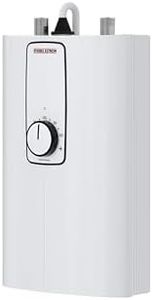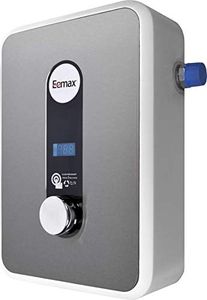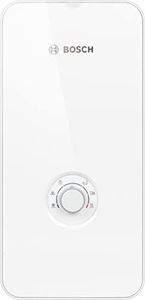We Use CookiesWe use cookies to enhance the security, performance,
functionality and for analytical and promotional activities. By continuing to browse this site you
are agreeing to our privacy policy
10 Best Electric Tankless Water Heater
From leading brands and best sellers available on the web.Buying Guide for the Best Electric Tankless Water Heater
Choosing an electric tankless water heater is a smart way to ensure on-demand hot water while saving space and energy. Unlike traditional tank units, tankless models provide hot water only as needed, making them more efficient. However, picking the right one depends on understanding certain features and how they'll match your household's needs. It's essential to think about your daily water usage, the temperature of incoming water in your area, and the number of places you'll use hot water at the same time.Flow Rate (GPM - Gallons Per Minute)Flow rate tells you how much hot water the unit can deliver at one time, measured in gallons per minute (GPM). This is crucial because it determines if your heater can handle running multiple showers or faucets at once. Lower GPM (1-2) suits small outputs, like a single sink, while mid-range (2-4) works for one shower or washing machine. Higher GPM (5+) supports several uses at the same time. To choose the right flow rate, consider how many hot water fixtures you’ll use simultaneously and sum up their typical GPM values.
Power (kW - Kilowatts)The power of the unit, measured in kilowatts (kW), shows how quickly the heater can warm up water. More kW means a quicker response, especially in colder climates where incoming water is much colder. Low-powered units (10–18 kW) are generally suitable for point-of-use needs, while medium (18–27 kW) serve small homes or apartments, and high-powered ones (28 kW and above) are better for larger households with high simultaneous demand. Consider your region’s water temperatures and your household’s peak demand before choosing.
Temperature RiseTemperature rise is how much the heater can increase your water temperature from its starting point. In colder areas, incoming water may be very cold, so you need a higher temperature rise. Heaters are usually rated at certain GPM for a given temperature rise, like a 3 GPM at a 45°F rise. To know what you need, subtract the average incoming water temperature from your desired hot water temperature. This ensures your heater can provide water hot enough for comfort.
Electrical RequirementsElectric tankless heaters require significant power, often needing dedicated circuits and sometimes upgrades to your home’s electrical panel. The electrical requirement is shown in both amps and voltage, for example, 240V and 2x40A breakers. Lower amp models are easier to install but may be weaker, while higher amp models are more powerful but may need electrical work. Always check your home’s capacity before deciding.
Size and InstallationThese heaters are compact, but sizes vary. Some are made for mounting under sinks, others for wall installation in utility rooms. A smaller unit fits tight spaces, while a larger one might be needed for whole-house use. Consider where it will go and ensure enough space and ventilation. Also, professional installation may be required for larger models.
Control FeaturesSome models come with digital displays, adjustable temperature controls, or remote options. Advanced controls make it easier to set precise temperatures and monitor usage, which is helpful in homes with kids or elderly. Simpler units have just a dial or pre-set levels. Think about how much customization and ease of use is important for your household.
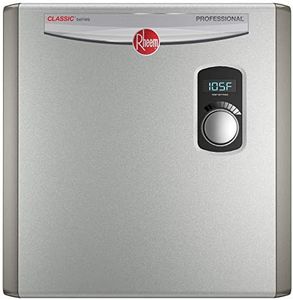
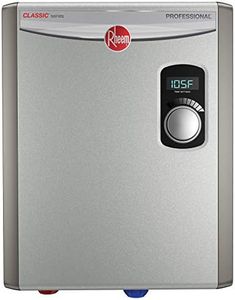
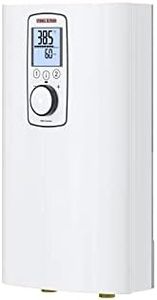
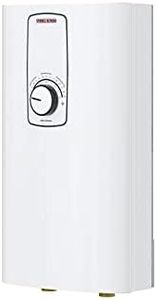
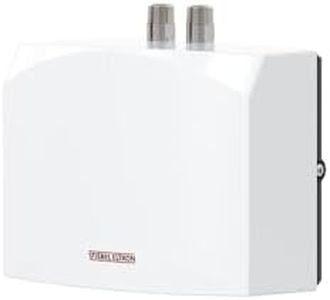
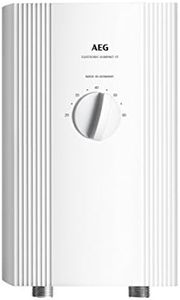
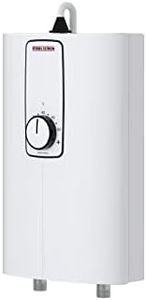
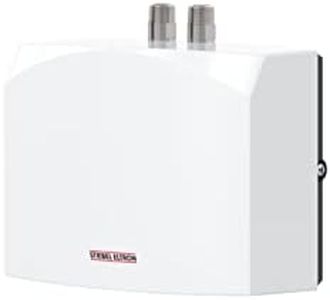
![Bosch Tronic 4000 6 EB Electronic Small Instantaneous Water Heater with Fixed Connection, Energy Class A, 6 kW [Energy Class A]](https://images-proxy.bestreviews.guide/aftI5wpYekcCERFSYWcX7OFkxxo=/0x300/https://m.media-amazon.com/images/I/31mdg7v4qaL._AC_CX679_.jpg)
